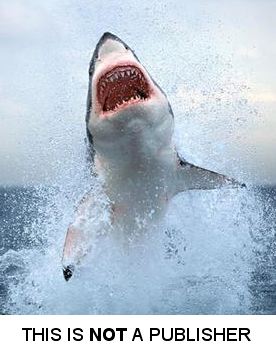1. Understanding Publishers
| |
(i) THE ARITHMETIC OF PUBLISHING |
Publishers are not the enemy! When you’re sending off an MS and getting knocked back time after time, it’s natural to want to blame someone. You imagine a smug clique conspiring to exclude you and turn a blind eye to your masterpiece. Can’t they see the quality of your writing? Isn’t it better than 90% of the rubbish they publish?
Well, your MS may not be a masterpiece, and what looks like published rubbish to you may have virtues that appeal to other people. But let’s suppose your MS is the genuine article. You still need to understand how publishing works—and how the minds of publishers work.
First off: there are no smug fat cats in publishing. In particular, the publishers, editors and publishers’ readers involved in deciding what to publish are hugely underpaid for their long hours of labour. Magazine editors are usually not paid at all. Anyone who takes a job in publishing does it out of love—because they certainly wouldn’t do it for the money.
Publishers aren’t perfect because the situation they work in isn’t perfect. In fact, it’s diabolical. Not because they are governed by some evil system—unless you want to call arithmetic an evil system. It’s a simple matter of numbers: everyone wants to be a writer, not enough people want to be readers.
Or, revise that. Not enough people want to read widely. A few blockbusters per year could satisfy a large proportion of the reading public. And even readers who read widely are likely to borrow books from libraries and friends, or buy second-hand. (I hang my head, I’m guilty too.)
So, only a minute fraction of what gets written will ever get published. And of what gets published, only about one book in five will turn a clear profit (going by US statistics, so probably not very different in Australia). A tinier percentage again will make seriously big money.
Luckily, the unit cost for books is relatively low, and modern technology has been making it cheaper. Of course, the big money comes in when the initial production costs have been covered. As with CDs and DVDs, there's more and more profit in the sale price (after distribution and retailing) once you’ve reached a certain point.
Let's be thankful for the titles that make big money. They cross-subsidise all the hopefuls!
A hard-nosed cost-profit analysis would probably lead publishers to concentrate their efforts on a smaller number of titles per year. But, in spite of rumours to the contrary, publishing is not a particularly hard-nosed business. It is a business, so publishers can’t bring out as many books as authors would like, or as many as they’d like to bring out themselves. They have to stay afloat.
But even now, when publishing houses have been absorbed into global conglomerates producing everything from cars to concrete, there’s still a glamour and prestige surrounding the book industry that matters more than megabucks.
|





